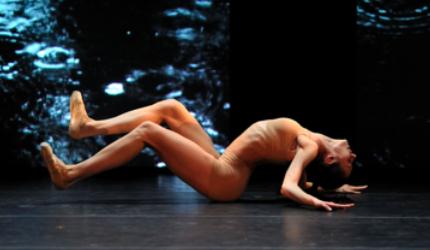Ballet is more often associated with tutus and dying swans than contemporary political and social issues. But Atlantic Ballet Theatre’s Ghosts of Violence takes the unlikely subject of domestic abuse as its focus. Based on true stories of women who have suffered at the hands of their partners, the multimedia production is anything but a comfortable evening in the theatre.
“It asks us to go to a really dark place on stage,” says dancer Leigh Alderson. “Ballet tends towards the classics or fairytales and fluff pieces, so it’s nice to have something gritty you can really get your teeth into as a performer.”
Developed by company head Igor Dobrovolskiy in collaboration with playwright Sharon Pollock, the work charts the gradual deterioration of four different relationships. Though it’s based on true stories, the characters remain nameless, a testament to the commonality of the experiences depicted.
“It’s a problem affecting society broadly across lines of class and ethnicity, so it was important to reflect that in the work,” Alderson says. “It’s something that happens to doctors and to people working at McDonald’s.”
Working in collaboration with the Silent Witness Project (an international organization that spreads awareness about domestic violence), the company places a series of life-size red silhouettes in the lobby before each performance, each accompanied by the story of a woman who died at the hands of her partner.
“It was important to us that the discussion wasn’t just confined to the stage,” Alderson says. “We get a chance to speak to the audience after the shows sometimes, and people are really moved by the work. I didn’t have any firsthand experience with the subject matter before we started the process, but hearing the experiences that come up in those conversations has really hit home how widespread this problem is.”
So how does it feel to play an abusive husband on stage?
“In order to connect with the reality we’re playing, we have to understand the mindset of men who do these kinds of things,” Alderson says. “It’s really interesting to do something that requires that kind of exploration, but it’s also really disturbing at times.
“We didn’t want to make a piece where the audience would just sit back and watch blankly,” he adds. “The point is to start a conversation. If we get enough people discussing it, we can start to break down that sense of isolation and shame that often comes with these kinds of relationships.”


 Why you can trust Xtra
Why you can trust Xtra


